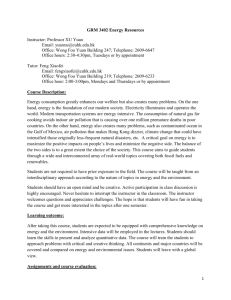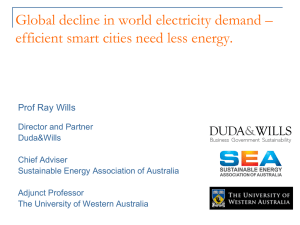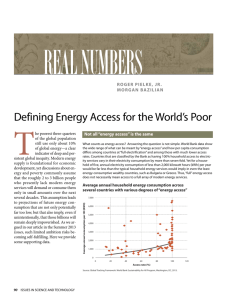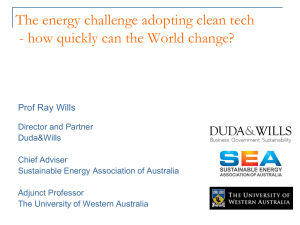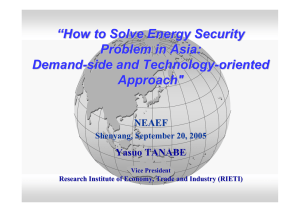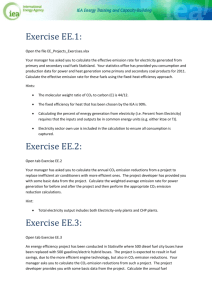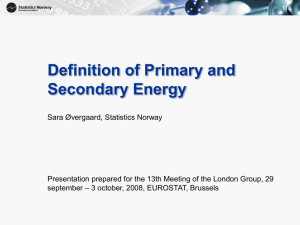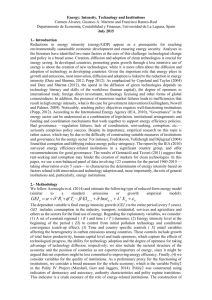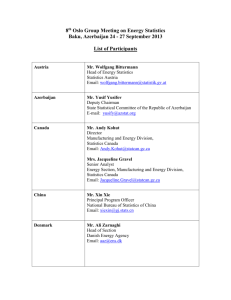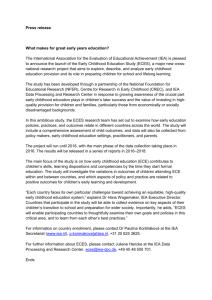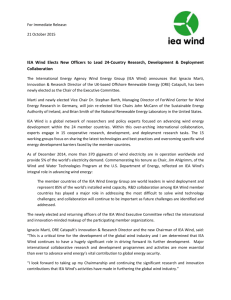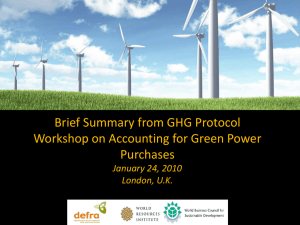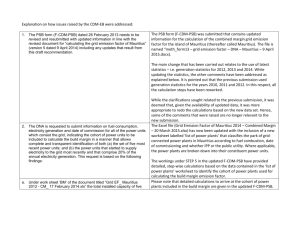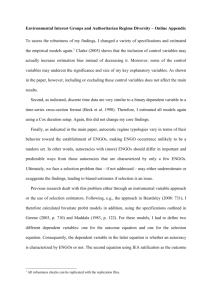India`s Quest for A Lower Carbon Footprint
advertisement
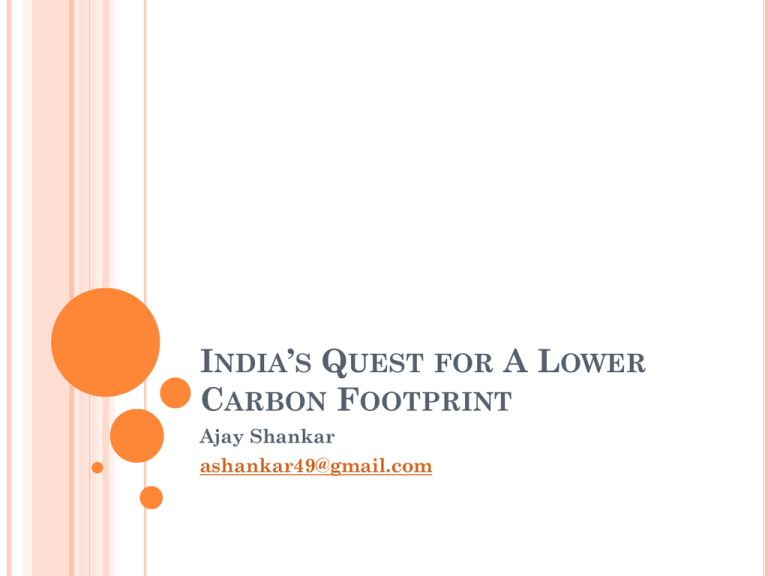
INDIA’S QUEST FOR A LOWER CARBON FOOTPRINT Ajay Shankar ashankar49@gmail.com INDIA: THE PRESENT SITUATION Population GDP Per capita GDP GDP Growth Rate TPES Growth Rate Electricity Capacity 1.2 billion (Census 2011) $1.7 trillion (IMF April 2011) $1,380 (IMF April 2011) Around 8.5% over last ten years 8 to 10% over next two decades Around 3.5% (IEA) 173,326MW (CEA India April 2011) 400 million without access to electricity in 2001 (Census 2001) TOTAL PRIMARY ENERGY SUPPLY SHARE OF TOTAL ENERGY SUPPLY IN 2008 INDIA’S RELATIVE POSITION (Source Selected Indicators 2008: Key World Energy Statistics 2010 IEA ) EMISSION INTENSITY India’s Emission Intensity fell 35% between 1994- 2007 India’s Voluntary National Target is to further lower emission intensity by 20-25% between 2005-2020 (Source Selected Indicators 2008: Key World Energy Statistics 2010 IEA ) ENERGY EFFICIENCY (Source Selected Indicators 2008: Key World Energy Statistics 2010 IEA ) FOSSIL FUELS IN ENERGY SUPPLY (Source Selected Indicators 2008: Key World Energy Statistics 2010 IEA ) EMISSION INTENSITY (Source Selected Indicators 2008: Key World Energy Statistics 2010 IEA ) ENERGY EFFICIENCY Market Mechanism Cross subsidy in Electricity Pricing. De facto carbon Tax Over 50% Price signal + Competitive market structure Global Hub For Small Fuel Efficient Cars Energy Intensive Manufacturing; Steel, Cement, Paper Plants: Among Global Best Rapid Penetration of CFLs Regulatory Authority Electricity Conservation Act. Bureau of Energy Efficiency. Labeling of Appliances Standards. Moving Target Approach with Trading System Envisaged CHALLENGES AND OPPORTUNITIES Challenges Contra Effect of Rising Incomes Opportunities Immediate. Technically Easy Waste in Subsidized Sector. Farmers Pump Sets For Irrigation SMEs Technical Losses in Electricity Supply Smart Grid Technically Difficult Green Buildings: Cost Competitiveness. Smart Green Cities Energy Efficient Urban Design Transport: Intra and Inter City. Key Parameter Electric Vehicles LOWERING CARBON EMISSIONS FROM ENERGY SUPPLY Need to Pursue All Options and Create Winners Policy Environment of: Fiscal Deficit and Very Limited Resource Price Sensitivity in a Low Income Democracy Renewable Energy Focus Separate Ministry since Eighties State Electricity Commissions (SERCs) Mandated by Electricity Act 2003 to Increase Share of Renewable Energy in Portfolio of Utilities. Marginal Increase in Cost to Consumer. WIND Successful. Fifth Largest in World. Over 14,000 MW. Doubling of Capacity since 2007. Near Grid Parity. Growth Sustainable. Private Sector. Liberal Tax Incentives. Competitive Manufacturing Industry. Indian Firm Suzlon Reported World’s 3rd Largest Onshore Potential 60-70,000MW Offshore Yet To Begin Energy Potential from Wind Modest SOLAR MISSION Program for 20,000MW by 2020 launched. First Phase 1000MW . Private Sector. Competitive Market Structure. Prices 30% Lower In One Year. Still High. Hope for Grid Parity. NUCLEAR Domestic Industry Three Stage Program Grid Parity Civil Nuclear Agreement Prime Minister Singh Reiterates Commitment Target 20,000MW by 2020 Rapid Scaling Up Thereafter OTHER OPTIONS Biomass Small Village Level Plants with Cow Dung Crop Residue Carbon Capture and Storage (CCS) Indian Coal Pilot Project Shale Gas SUMMARY Pursuit of Multiple Paths Competitive Market Structure + Scale Effect Innovation Frugal Engineering. Movement Down Cost Curve Grid Parity
